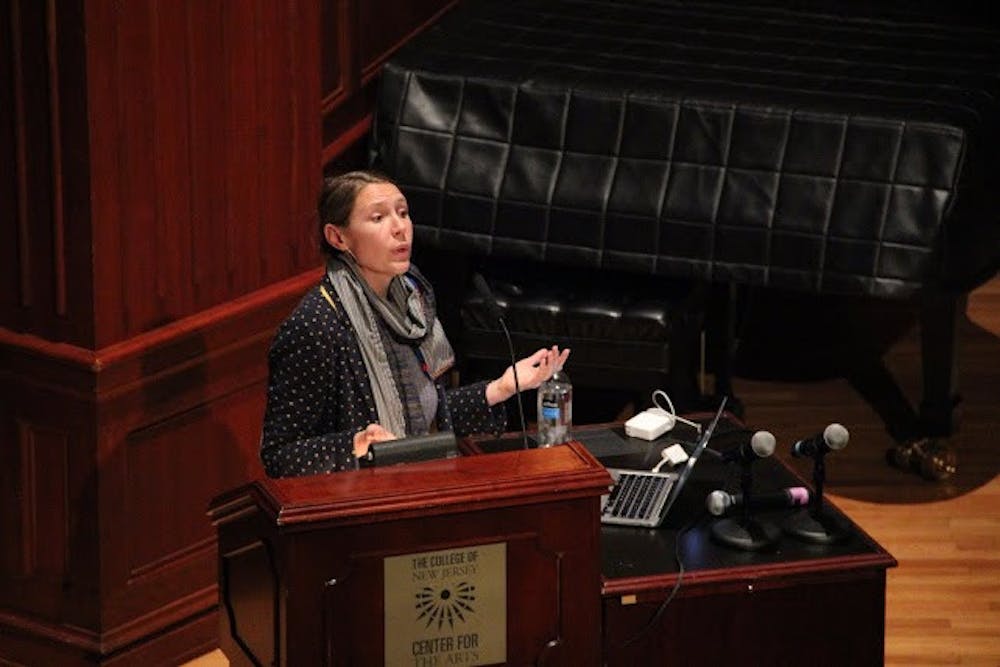By Brandon Magown
Correspondent
When high school budgets get cut, one of the first programs to lose funding is the art, and it loses its status in the education system. But Jessica Hamlin and Art21 are trying to change that, bringing more attention to contemporary art and offering answers to the question: “why does art matter?”
Hamlin spoke on Wednesday, Nov. 5, about Art21 and the company’s goal to bring more awareness to 21st century contemporary art, especially in grades K-12.
As a non-profit, Art 21 is dedicated to introducing broad public audiences to today’s visual and contemporary artists. Hamlin believes that today’s public has a very skewed and closed-minded opinion of what art really is.
“Most people think that art is old and that it was all made by old, dead, white guys. My job now is to reintroduce art and redefine it,” Hamlin said.
Not only does Hamlin shoulder the burden of persuading the public to change its views on art, but she also attempts to change the way teachers and educators think and teach in the classrooms.

“I am trying to get them to teach in ways that are creatively empowering and to think about teaching as an artistic act,” Hamlin said. “I want them to think of themselves as creative practitioners.”
Hamlin doesn’t support how schools today are standardizing the ways and expectations of what and how students should learn. She believes there is something to be learned from the ways artists think, their ability to think freely, and their luxury to approach art from an individual perspective.
During her slideshow, Hamlin introduced the audience to a contemporary artist who, while working, restrains himself in various ways. Sometimes the artist will tie a rope to himself, not unlike a leash, preventing him from fully reaching the canvas. Elsewhere, he will attach the canvas to the ceiling and use a trampoline to reach and paint it. Immediately following that, she screened a video of an elementary art class painting under similar restraints.
The restraints consisted of tactics such as taping the paper to the bottom of a desk and using only the reflection of a mirror to see, or tying a paintbrush to a string and then that string around their heads, forcing them to paint without any hands.
These unconventional strategies, which were introduced to the school by Art21, forces students to think in new ways. When students were given tasks to create a painting but with some sort of obstacle, it forced the students to come up with ways to overcome that obstacle. They had to get creative and use problem solving skills to accomplish their goals.
Hamlin believes, however, that these artistic teachings can go beyond art class and into every other subject. She wants teachers and students to “think of art as a mode of learning,” and she believes that teachers, regardless of subject, can apply the methodologies of artists to foster a more creative educational process.







